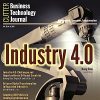Business Transformation Requires Transformational Leaders
Leadership and teaming skills are front and center in times of rapid change. Meet today’s constant disruption head on with expert guidance in leadership, business strategy, transformation, and innovation. Whether the disruption du jour is a digitally-driven upending of traditional business models, the pandemic-driven end to business as usual, or the change-driven challenge of staffing that meets your transformation plans — you’ll be prepared with cutting edge techniques and expert knowledge that enable strategic leadership.
Subscribe to Arthur D. Little's Culture & Leadership Newsletter
Insight
The Evolving Enterprise API Platform
This Executive Update examines some current trends in the API space, including API platforms, as well as the influence of microservices, streaming, and serverless on those API platforms. We also cover how enterprises are expanding their API program to include the broader concerns of enterprise architecture. Finally, we take a look at what those trends and perspective shifts may hold for us in the future.
Regulated industries should not pull back in their quest toward digital transformation but should instead find a way to embrace it. To begin, regulated industries should consider the questions explored in this Advisor.
Innovation management processes do not follow a prescriptive, single formula. Each organization can decide and define what works. This Advisor provides a basic outline of the common elements/steps for a process to manage innovation with disruptive technologies.
An Agile Path Leads to Breakthrough Product Innovation
In this Executive Update, we look at how non-software, product–based companies can successfully embrace Agile — and non-Agile — methods in a complementary way.
In this issue of The Cutter Edge we explore the idea of allowing and encouraging dissent in organizations, four best practices that can help address innovation challenges, and innovation models across industries.
Challenging the Status Quo
A North American energy-producing company was seeking to understand how to change its status-quo pattern of finding new solutions only when it was abundantly clear it would be unable to meet its yearly market targets. In short, it was looking for a different approach to conducting its operations organization. To that end, I encouraged leadership to focus on several areas, including the topic of this Advisor: fostering a mindset of challenging the status quo on everything.
In the digitized world of financial data, there are truly enormous volumes of heterogeneous structured and unstructured data across siloed data stores. Managing such complexity is beyond human cognitive abilities or comprehension; hence, AI-based smart machines are required to assist human cognition and decision making. We believe that if AI is to achieve its promise, financial institutions are going to have to address a range of challenges.
Industry 4.0 — An Introduction
In this month’s issue of Cutter Business Technology Journal, we examine the latest advancements in technologies related to Industry 4.0 and the impact of these technologies on work, business, and organizations by featuring six articles that cover a range of topics.




















